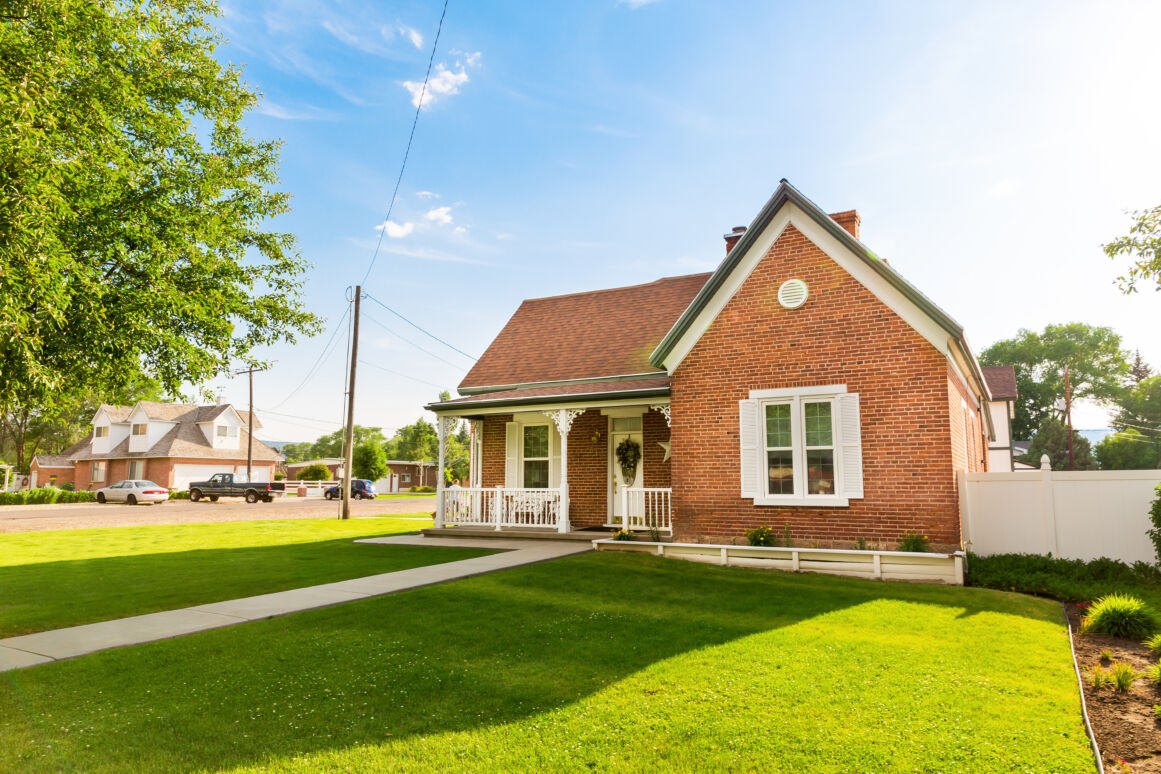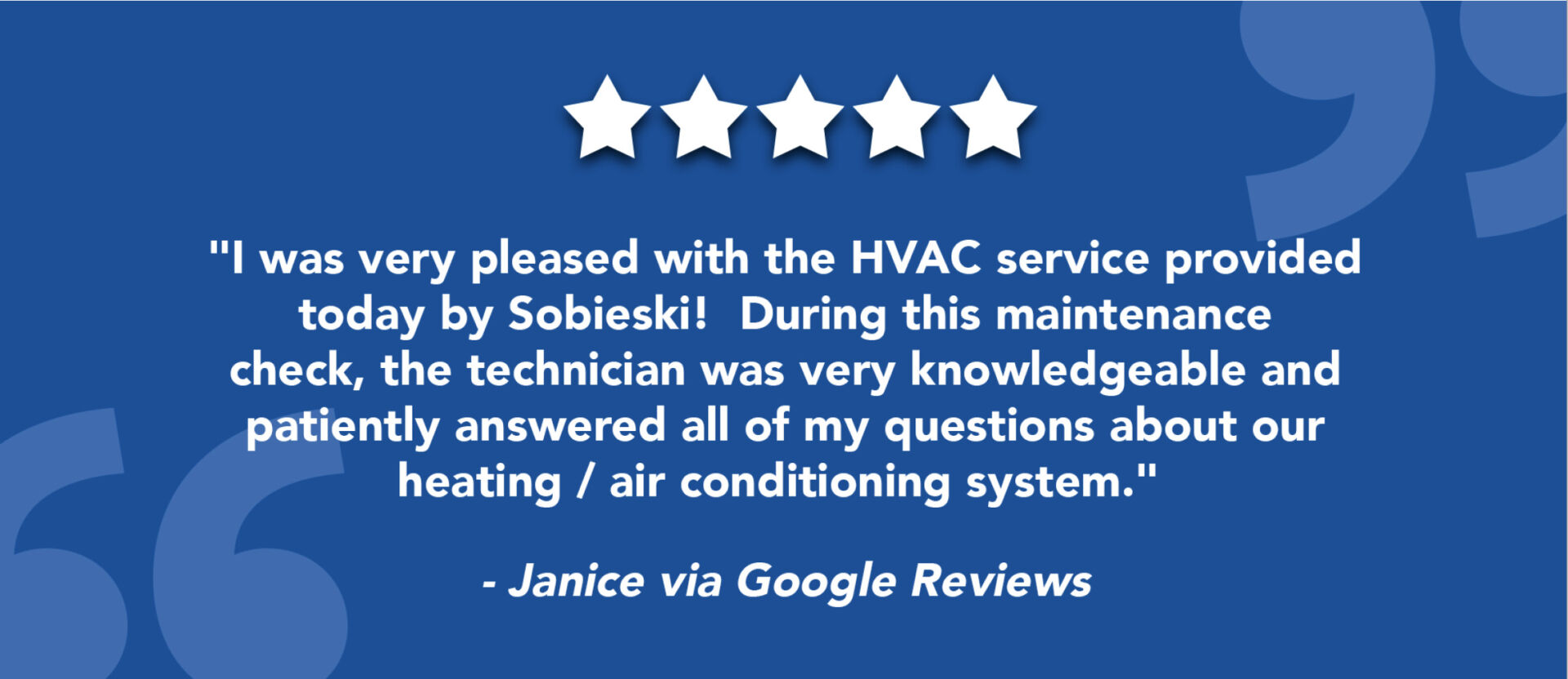
When you’re buying a house, the HVAC system probably doesn’t top your list of features you’re concerned about. However, your comfort and energy bills primarily depend on HVAC system quality and features installed. Use these HVAC fact-finding tips to help you make a more informed home-buying decision.
System Types
When buying a house in the Mid-Atlantic region, you certainly want to know the type of heating system in the home. Gas furnaces are the most common heating systems, and gas connections are most places nowadays.
Don’t overlook the cooling unit. Does the home have a rooftop packaged A/C system or a split system with a large cabinet next to the foundation? With older homes, you always have the option of installing ductless mini-split units if no cooling system is installed.
HVAC Condition
Ask your realtor or homeowner the age of the cooling and heating systems and any accompanying documentation and maintenance records. If the furnace and/or the A/C are older than 10 years, factor the replacement cost into your purchase decision.
Energy Sources
Consider the energy sources for the heating and cooling units. Does the heating system use natural gas, oil, or propane? If the home has a heat pump, is the backup heating source natural gas or electricity? Furnaces that use natural gas tend to save energy costs over the long haul.
Energy Efficiency
Newer HVAC systems deliver substantially greater energy efficiency than those manufactured just 15 or 20 years ago. Check the AFUE (furnace and boiler) and SEER (A/C) ratings. An AFUE of 90 or greater is exceptional, and look for at least a SEER 16 for the A/C unit.
Add-on Systems
Add-on systems substantially increase your comfort and lower energy bills. For example, a whole-home humidifier makes your home more comfortable during winter. Whole-home ventilation helps improve comfort and energy savings throughout the year.
At Sobieski Services, Inc., our goal is to help our customers in Delaware, Pennsylvania, Maryland and New Jersey learn more about energy and home comfort issues — especially HVAC and plumbing issues — so that they can save money and live in healthier, more comfortable homes.


Old buildings are beautiful, but they are often riddled with infrastructure problems, such as aging pipes. By keeping an eye on signs of plumbing problems, you can fix the issue before it leads to expensive water damage.
There are miles of piping inside of our walls, floors, and ceilings, giving us access to clean water while taking away waste we don’t want. And they are working 24/7, even when we’re sleeping.
Unfortunately, we tend to forget about all the pipes inside and underneath our homes. But if they don’t receive adequate attention, you’ll soon be forced to take notice. Think wet spots, mold, low water pressure, and cracked and busted pipes.
Plumbing maintenance from a team of professionals can routinely assess your plumbing systems for any signs of premature failure, but it’s important to know how to recognize the signs of an aging or failing plumbing system yourself.
One small failure, such as a pipe leak, can permanently damage the foundation and original structure as well as valued possessions, such as art, musical instruments, and furniture.
6 Signs of an Aging Plumbing System
Some signs of an aging plumbing system in need of repair or replacement include:
- Age and Type of Your Pipes
- Different pipe materials have different lifespans. You can expect PVC and brass pipes to last 40 to 70 years, while copper pipes have an average lifespan of around 50 years. Galvanized steel pipes, on the other hand, have a life of about 20 to 50 years. Keep in mind that these are general estimates and depend on a variety of factors, such as the hardness of your water. Discolored Water
- The water that comes out of your pipes should be clear. If you notice any discoloration in your water, such as brown, yellow, green, or any other color, it could be coming from the city’s pipes or your home’s pipes. Speak with a professional plumber to learn the cause of your discolored water. When pipes age, whether on the city side or the homeowner side, water can leech rust, sediment, and minerals from the pipes. Cloudy water can indicate excess air within the pipes. Yellow and brown water usually indicates rust, while green tints are caused by extension corrosion in copper pipes. If you notice green-colored water, contact a professional plumber right away — your pipes are in a serious state of degradation. If you have a lot of scaling and mineral stains around your plumbing fixtures, you may have hard water that can be rectified with a water softener. If the discolored water turns out to be a problem on the city side, you can install a whole-house water filtration system to remove excess rust, sediment, and other contaminants. If the problem turns out to be homegrown, you may need to replace your aging pipes with copper pipes, which don’t rust. Not only will this clear up your water, it will also prevent things like burst pipes before they cause extensive water damage to the home. Discolored Pipes
- Every once in a while, take a look at your exposed pipes to see if there are any signs of corrosion, rust, or flaking metal. If you see any signs of discoloration around your pipes, there could be a leak or something more serious. Soggy or Green Patches in the Yard
- One sign of a sewer line leak is if you have a patch of yard that’s a lot greener than the surrounding areas. Leaking sewer lines can cause permanent soggy spots in the yard as well. Sometimes invasive tree roots cause these leaks, but often it’s the result of corrosions and degrading materials from old age.
If you suspect a leaking sewer line, contact a professional plumber right away to avoid any further damage.Bubbling, Peeling Paint - If you start to notice the paint on your wall or ceiling bubbling and peeling, it’s almost always the result of moisture. This can come from a leaking roof or plumbing system. You may also notice brown spots, blistering, and discoloration. Contact a professional plumber right away to investigate the cause.Rising Water Bills
One way you can tell if you have a plumbing leak is if your water bill starts to rise without any obvious reason. Even small leaks can cause extensive damage. If you suspect a leak in your plumbing system, contact a professional to find the leak and fix it.
Aging plumbing systems should be replaced before problems develop. If you have any questions about the status of your plumbing system, contact Sobieski Services for inspection, repairs, or replacement. We can use non-invasive technology, such as pipe bursting and epoxy coating to replace your pipes with hardly any disruption to your home or routine.
Don’t wait for a plumbing emergency — contact us today to schedule an appointment with one of our expert plumbers in Delaware, Maryland, Pennsylvania, and New Jersey.



